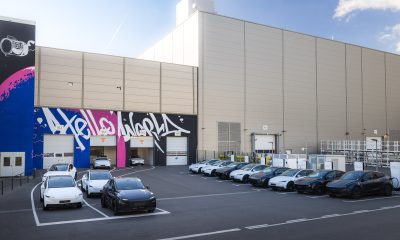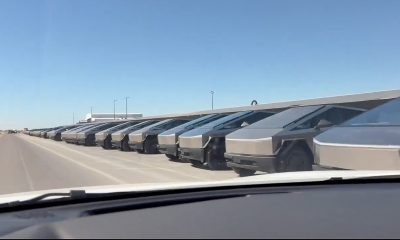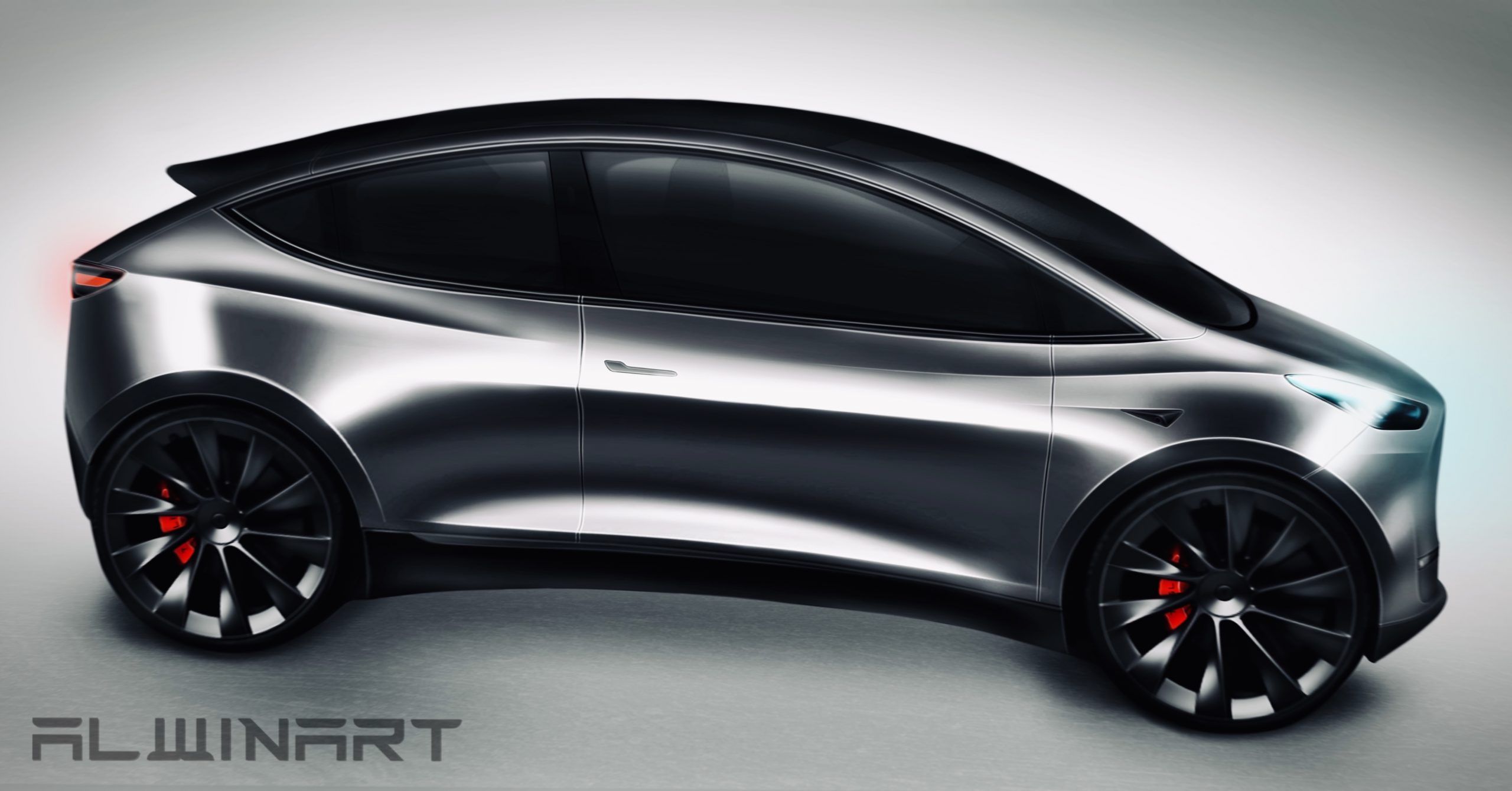
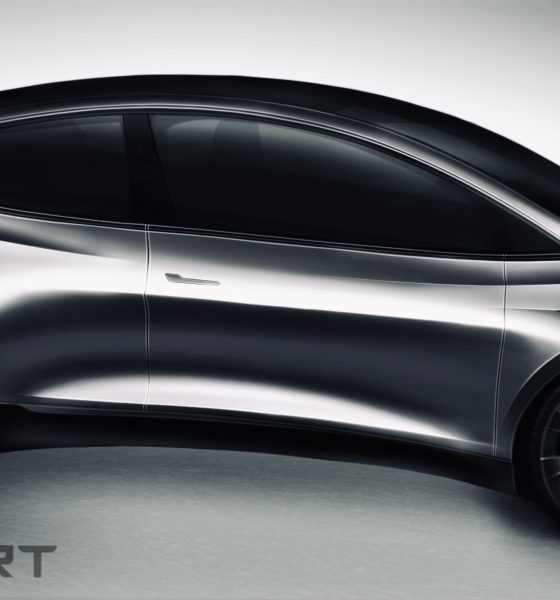
News
Tesla’s $25k EV inches closer as official confirms Giga Shanghai’s localization rate
Tesla’s Gigafactory Shanghai is now the company’s primary export hub, which means that for the near future, at least, the expansive facility would be producing cars for both the local market and foreign territories. To accomplish this goal, Tesla China would have to ensure that it gets access to a reliable supply chain that would enable Giga Shanghai to produce vehicles with as few interruptions as possible.
With this in mind, it was pertinent for Tesla China to increase the localization of parts for the Made-in-China Model 3 and Made-in-China Model Y. And for the most part, the company has accomplished this goal. Previously, rumors from local media outlets noted that Tesla was already at 90% localization in Giga Shanghai. This information has now been confirmed by the Lingang New Area Party undersecretary, who noted that the facility’s localization rate should reach 90% by the end of 2021.
With a fully localized supply chain, Giga Shanghai could effectively play the part of the company’s export hub, producing vehicles for both the local Chinese and international markets. This would likely be beneficial for Tesla as a whole, as Giga Shanghai’s vehicles have been lauded for their precise build quality and their capability to weather extreme conditions like deep floods. A highly localized supply chain would likely allow the company to pursue even more ambitious projects as well, such as the highly-anticipated $25k Tesla.
The $25k Tesla is the company’s most ambitious vehicle yet. Smaller and more affordable than the Model 3, the $25k Tesla is expected to be produced in numbers that the company has never attempted or attained before. It’s also set to compete in a market where cost is king, with buyers in the segment likely prioritizing affordability over performance and features. It would then take a strong supply chain and some serious mass manufacturing strategies to ensure that the $25k Tesla is as profitable as its siblings like the Model 3 and Model Y.
Reports from China are suggesting that the $25k Tesla is drawing closer. Earlier this month, Tesla China announced that its R&D Center is about to go online soon. This came just days after prolific auto leaker claimed that a prototype of the $25k Tesla had already been completed. As early as January, Chinese media outlets have also shared information pertaining to the upcoming car, stating that the company’s environmental impact assessment for the vehicle is already ongoing and that the first prototypes of the car would likely be tested in the latter half of the year.
Don’t hesitate to contact us with news tips. Just send a message to tips@teslarati.com to give us a heads up.
News
Tesla Cybertruck explosion probe ends with federal involvement and new questions
The 78-page document detailed a planned attack by former Green Beret Matthew Livelsberger, who died by suicide before the blast that injured six people.
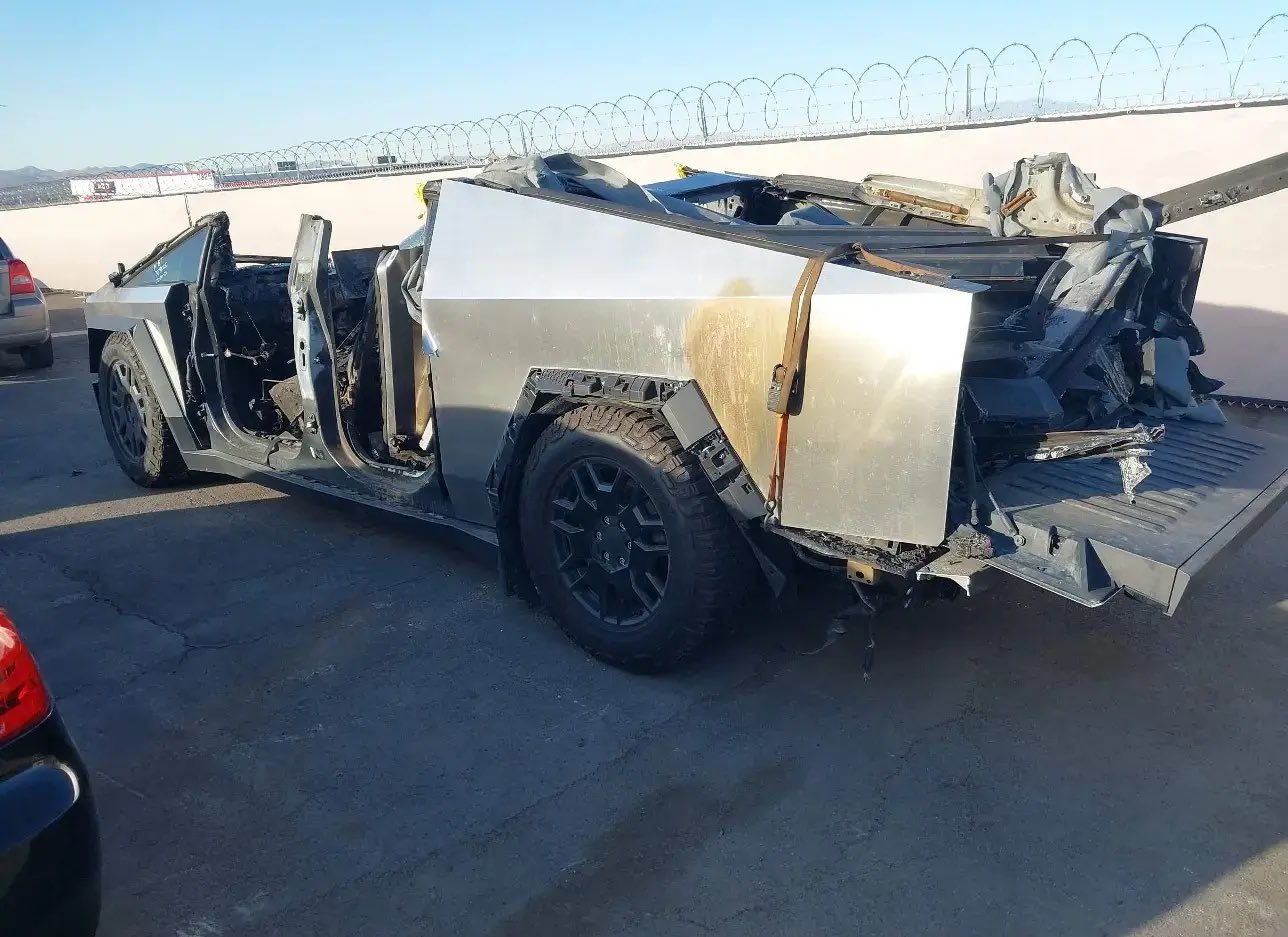
The Las Vegas Metropolitan Police Department (LVMPD) has released its final investigative report into the New Year’s Day Cybertruck explosion outside the Trump International Hotel. But instead of bringing clarity, the findings have only raised more questions.
The 78-page document detailed a planned attack by former Green Beret Matthew Livelsberger, who died by suicide before the blast that injured six people.
The perpetrator’s manifesto
According to a Fox News report, Livelsberger rented the all-electric pickup through Turo while on leave from his Special Forces unit. He filled the rented Cybertruck with fireworks, gas cans, and camping fuel before driving it to the hotel shortly after 8:40 a.m. on January 1. Surveillance footage showed him pouring accelerant into the truck bed moments before detonation, confirming premeditation.
Livelsberger left a manifesto on his phone, which was later deemed classified by the Department of War. This case was then handed over to federal authorities. Still, the LVMPD and federal investigators noted in their report that the incident was a “vehicle-borne improvised explosive device” (VBIED) attack “with the potential to cause mass casualties and extensive structural damage.” Officials, however, stopped short of labeling it terrorism.
In digital notes, Livelsberger wrote that his act was not terror-related but intended as “a wake-up call,” criticizing what he called America’s “feckless leadership.” He wrote, “Americans only pay attention to spectacles and violence. What better way to get my point across than a stunt with fireworks and explosives.”
The incident ironically showcased the Cybertruck’s durability
Tesla CEO Elon Musk was among the first to respond publicly after the blast, confirming through X that the company’s senior team was investigating the incident. He later stated that vehicle telemetry showed no malfunction and that the explosion was caused by “very large fireworks and/or a bomb” placed in the Cybertruck’s bed.
Ironically, footage of the incident in the Cybertruck’s bed showed that the vehicle’s durable construction actually helped contain the explosion by directing the blast upwards. The bed remained largely intact after the explosion as well. Even more surprisingly, the Cybertruck’s battery did not catch fire despite the blast.
Months later, the same Cybertruck appeared on the online auction platform IAA, marked as “not ready for sale.” The listing has stirred debate among Tesla fans about why the historic vehicle wasn’t reclaimed by the company. The vehicle, after all, could serve as a symbol of the Cybertruck’s resilience, even in extreme circumstances.
Elon Musk
Norway’s $2 trillion sovereign wealth fund votes against Elon Musk’s 2025 performance award
The fund is managed by Norges Bank Investment Management (NBIM), and it holds a 1.14% stake in Tesla valued at about $11.6 billion.

Norway’s $2 trillion sovereign wealth fund has voted against Elon Musk’s 2025 performance award, which will be ultimately decided at Tesla’s upcoming annual shareholder meeting.
The fund is managed by Norges Bank Investment Management (NBIM), and it holds a 1.14% stake in Tesla valued at about $11.6 billion.
NBIM’s opposition
NBIM confirmed it had already cast its vote against Musk’s pay package, citing concerns over its total size, dilution, and lack of mitigation of key person risk, as noted in a CNBC report. The fund acknowledged Musk’s leadership of the EV maker, and it stated that it will continue to seek dialogue with Tesla about its concerns.
“While we appreciate the significant value created under Mr. Musk’s visionary role, we are concerned about the total size of the award, dilution, and lack of mitigation of key person risk- consistent with our views on executive compensation. We will continue to seek constructive dialogue with Tesla on this and other topics,” NBIM noted.
The upcoming Tesla annual shareholder meeting will decide whether Musk should receive his proposed 2025 performance award, which would grant him large stock options over the next decade if Tesla hits several ambitious milestones, such as a market cap of $8.5 trillion. The 2025 performance award will also increase Musk’s stake in Tesla to 25%.
Elon Musk and NBIM
Elon Musk’s proposed 2025 CEO performance award has proven polarizing, with large investors split on whether the executive should be given a pay package that, if fully completed, would make him a trillionaire.
Institutional Shareholder Services and Glass Lewis have recommended that shareholders vote against the deal, and initiatives such as the “Take Back Tesla” campaign have rallied investors to oppose the proposed performance award. On the other hand, other large investors such as ARK Invest and the State Board of Administration of Florida (SBA) have urged shareholders to approve the compensation plan.
Interestingly enough, this is not the first time that Musk and NBIM have found themselves on opposing sides. Last year, NBIM voted against reinstating Musk’s 2018 performance award, which had already been fully accomplished but was rescinded by a Delaware judge.
Later reports shared text messages between Musk and NBIM Chief Executive Nicolai Tangen, who was inviting the CEO to a dinner in Oslo. Musk declined the invitation, writing, “When I ask you for a favor, which I very rarely do, and you decline, then you should not ask me for one until you’ve done something to make amends. Friends are as friends do.”
Elon Musk
Tesla begins production of new Model Y trim at Giga Berlin
Tesla announced on Monday that its Model Y Standard configuration was officially being built at Giga Berlin, less than one month after the company officially announced the configuration early last month.

Tesla has begun production of the new Model Y trim at Gigafactory Berlin, the company’s production plant in Germany.
Tesla announced on Monday that its Model Y Standard configuration was officially being built at Giga Berlin, less than one month after the company officially announced the configuration early last month.
On October 7, Tesla announced the launch of the Model 3 and Model Y Standard trim levels, its answer to the call for affordable EVs within its lineup and its response to the loss of the $7,500 electric vehicle tax credit.
On October 3, Tesla started production of the vehicles in Germany:
Model Y Standard says „Hello World“ – Production at Giga Berlin has started today! pic.twitter.com/p37JIfJDIB
— Tesla Manufacturing (@gigafactories) November 3, 2025
The Standard iteration of the Model Y is void of many of the more premium features that are available in the Rear-Wheel-Drive, All-Wheel-Drive, and Performance trims of the vehicle are equipped with.
A few of the features of the Model Y Standard are:
- Single Motor configuration
- No rear touchscreen
- Textile seats with vegan leather, instead of all vegan leather
- 320-mile range
- No glass roof
The launch of the Model Y Standard was truly a move to help Tesla get vehicles into the sub-$40,000 price point, and although many consumers were hoping to see the company get closer to $30,000 with these cars, this is a great starting point.
Deliveries in the United States have already started, and it seems it will be a vehicle that will do one of two things: either push some consumers to finally make the jump to Tesla, or it will give car buyers another reason to buy the Premium trims, as they may feel the lack of features is not a good enough deal.
This is something we saw with the Cybertruck’s Rear-Wheel-Drive configuration, which launched last year and ended up being more of the latter option listed above.
The Tesla Model Y Standard is actually a great deal in Europe
It was only a $10,000 discount from the All-Wheel-Drive Cybertruck, but it also did not have adaptive air suspension, premium interiors, or the powered tonneau cover, which many people felt was too much of a sacrifice.
The Rear-Wheel-Drive Cybertruck was discontinued only a few months later.
It does not seem as if this is the case with the Model Y Standard, which already seems to be an attractive option to some buyers.
-

 News2 weeks ago
News2 weeks agoTesla rolled out a new feature with FSD v14 to fix a major complaint
-
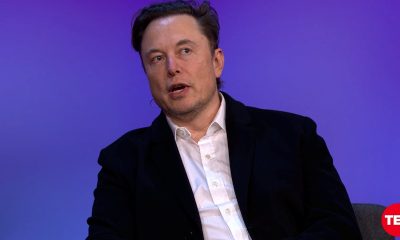
 Elon Musk2 weeks ago
Elon Musk2 weeks agoElon Musk hits back at former Tesla employee who disagrees with pay package
-
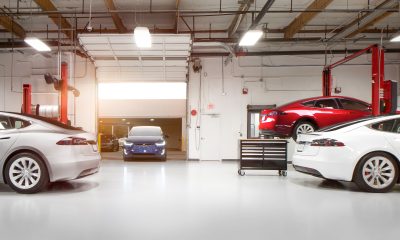
 News2 weeks ago
News2 weeks agoTesla just made Service even easier and more convenient
-
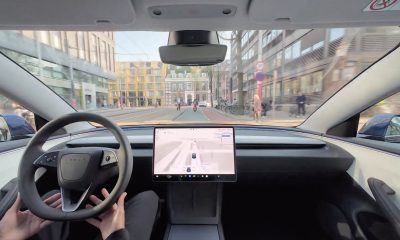
 News2 weeks ago
News2 weeks agoTesla Full Self-Driving’s new version officially gets a wider rollout
-
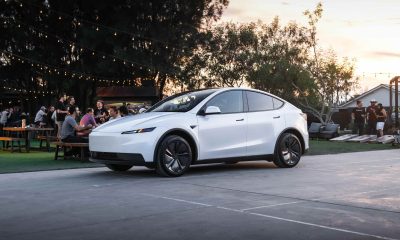
 News2 weeks ago
News2 weeks agoTesla makes crazy move to spur short-term demand in the U.S.
-
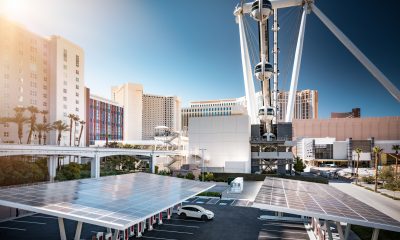
 News2 weeks ago
News2 weeks agoTesla rivals are lagging behind alarmingly in this crucial EV necessity
-
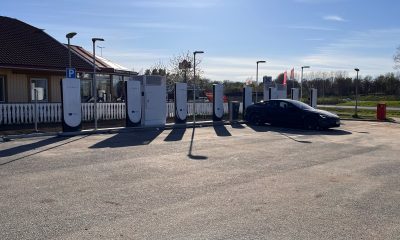
 News2 weeks ago
News2 weeks agoTesla Sweden faced with fresh strike from elevator company
-

 News2 weeks ago
News2 weeks agoKia and Tesla top list in Swedish study of strongest EV batteries






